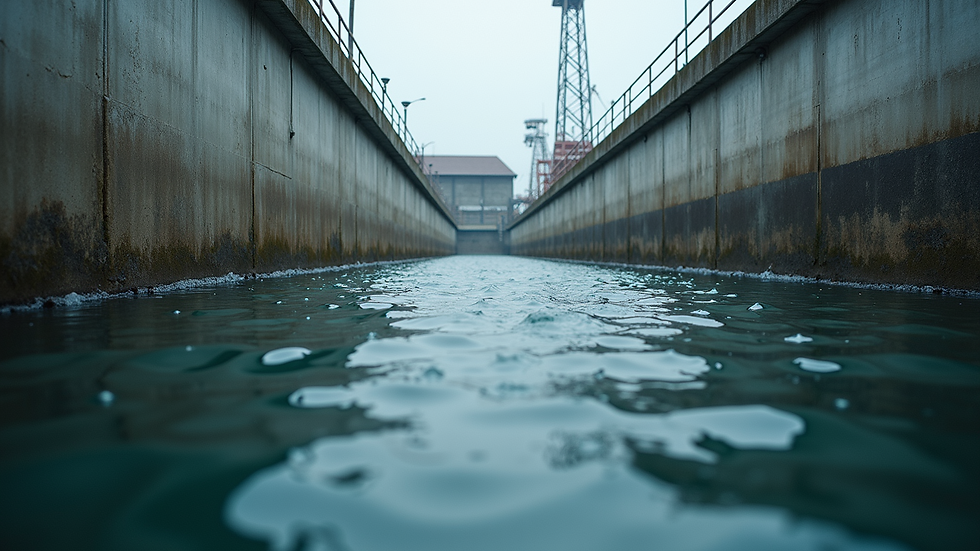Master Industrial Wastewater Management Techniques
- palwinder kaur
- Aug 22
- 3 min read
Industrial wastewater is a significant environmental concern that requires effective management and treatment to prevent pollution and conserve water resources. Industries generate large volumes of wastewater containing various contaminants, including chemicals, heavy metals, and organic matter. Proper treatment and management of this wastewater are essential to protect ecosystems, comply with regulations, and promote sustainable industrial practices.
Understanding Wastewater Treatment Strategies
Wastewater treatment strategies are designed to remove pollutants from industrial effluents before they are discharged into the environment or reused. These strategies vary depending on the type of industry, the nature of the contaminants, and the intended use of the treated water. Common treatment methods include physical, chemical, and biological processes.
Physical treatment involves processes like sedimentation, filtration, and flotation to remove suspended solids.
Chemical treatment uses reagents to neutralize or precipitate contaminants.
Biological treatment employs microorganisms to degrade organic pollutants.
For example, a textile factory may use coagulation and flocculation (chemical treatment) to remove dyes, followed by activated sludge (biological treatment) to break down organic residues. Combining these methods ensures comprehensive pollutant removal.

Key Wastewater Treatment Techniques
Screening and Grit Removal
This initial step removes large solids and grit that can damage equipment or hinder treatment processes.
Primary Sedimentation
Allows heavier particles to settle, reducing the load on subsequent treatment stages.
Aeration and Biological Treatment
Oxygen is supplied to support bacteria that consume organic matter, converting it into less harmful substances.
Chemical Precipitation
Used to remove heavy metals by converting them into insoluble forms that can be filtered out.
Advanced Treatment
Techniques like membrane filtration, activated carbon adsorption, and UV disinfection provide further purification, especially for water reuse.
Implementing these strategies effectively requires careful monitoring and control to optimize performance and minimize costs.
What is Industrial Water Management?
Industrial water management refers to the comprehensive approach industries take to handle water use, wastewater generation, and treatment within their operations. It encompasses water sourcing, consumption reduction, wastewater treatment, and reuse or safe disposal.
Effective industrial water management aims to:
Reduce water consumption through efficient processes and recycling.
Treat wastewater to meet environmental standards.
Minimize the environmental footprint of industrial activities.
For instance, a food processing plant might install water-efficient equipment and recycle treated wastewater for cleaning purposes, reducing freshwater demand and wastewater discharge.

Benefits of Industrial Water Management
Cost Savings: Lower water and energy bills through efficient use and recycling.
Regulatory Compliance: Meeting discharge standards avoids fines and legal issues.
Environmental Protection: Reduces pollution and conserves natural water bodies.
Corporate Responsibility: Enhances company reputation and stakeholder trust.
Industries adopting these practices contribute to sustainable development and resource conservation.
Practical Tips for Effective Industrial Wastewater Management
To master industrial wastewater management, industries should adopt a systematic approach that includes assessment, planning, implementation, and continuous improvement.
1. Conduct a Comprehensive Wastewater Audit
Identify the sources, types, and volumes of wastewater generated. Analyze the contaminants present to select appropriate treatment methods.
2. Implement Source Reduction Techniques
Modify processes to minimize wastewater generation. Examples include:
Using closed-loop cooling systems.
Switching to less toxic raw materials.
Optimizing cleaning procedures to reduce water use.
3. Choose Suitable Treatment Technologies
Select technologies based on wastewater characteristics and treatment goals. Consider factors like:
Treatment efficiency.
Operational complexity.
Capital and operating costs.
Space availability.
4. Monitor and Maintain Treatment Systems
Regular monitoring ensures treatment effectiveness and early detection of issues. Maintenance prevents equipment failure and prolongs system life.
5. Explore Water Reuse Opportunities
Treated wastewater can be reused for:
Cooling tower makeup.
Irrigation.
Process water.
This reduces freshwater demand and wastewater discharge.

Emerging Trends in Wastewater Treatment
Advancements in technology and increasing environmental awareness are driving innovation in wastewater treatment.
Membrane Bioreactors (MBR) combine biological treatment with membrane filtration for high-quality effluent.
Advanced Oxidation Processes (AOPs) use reactive species to degrade persistent pollutants.
Automation and IoT enable real-time monitoring and control, improving efficiency.
Zero Liquid Discharge (ZLD) systems aim to eliminate wastewater discharge by recovering all water.
Adopting these trends can enhance treatment performance and sustainability.
Enhancing Sustainability Through Industrial Wastewater Management
Sustainability in industrial wastewater management involves reducing environmental impact while maintaining economic viability. Strategies include:
Energy-efficient treatment processes to lower carbon footprint.
Resource recovery such as extracting valuable metals or nutrients from wastewater.
Collaboration with local communities to ensure water resources are protected.
By integrating these practices, industries can achieve long-term benefits and contribute to global water security.
Mastering wastewater treatment strategies and adopting effective industrial wastewater management practices are essential steps toward sustainable industrial operations. With the right approach, industries can protect the environment, comply with regulations, and optimize resource use for a better future.



Comments